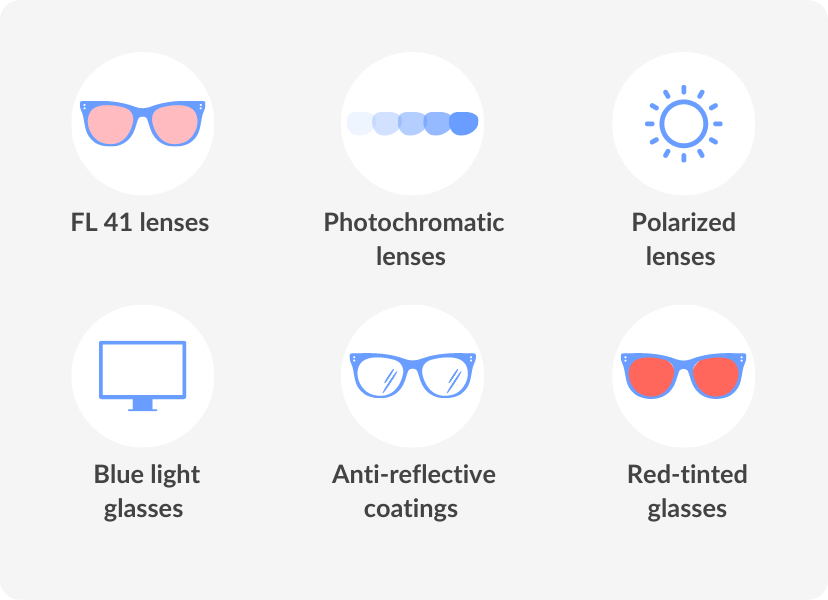وقتی شخص جسمی را از نظر فضایی در دو وضعیت مختلف یعنی دو تا می بیند، به دوبینی مبتلاست.
دوبینی می تواند ناشی از عیب عضلانی عصبی یا عیب انکساری چشم باشد.

دو بینی یکی از دردسرهای مردم است که موجب بروز مشکل در امور روزمره میشود؛ به طوری که گاهی فرد حتی نمیتواند راه برود. اما این بیماری، اغلب خودبه خود برطرف میشود.
هماهنگی بین بینایی دو چشم با مغز از دوران نوزادی شکل میگیرد. دید سه بعدی انسان، به خاطر تصویر منتقل شده از دو چشم به مغز است.
فرمان مغز و دید خوب دو چشم، موجب هماهنگی تمرکز دو چشم روی یک نقطه میشود. اما هرگاه عصب ماهیچههای دور چشم دچار اختلال یا بیماری شود، بیماری دوبینی بروز پیدا میکند.
اکثر افرادی که دچار دوبینی هستند، بیشتر شبح یا سایههای اضافی میبینید تا دو تصویر مجزا. این اغلب علامتی برای شروع آب مروارید است.
اگر دو تصویر جداگانه میبینید، این نشان میدهد که دو چشم شما بر یک نقطه متمرکز نمیشوند.
مغز هنگامی می تواند دو تصویر مستقل ایجاد شده از یک جسم در دو شبکیه چشم را با هم ترکیب و یک تصویر واحد تولید کند که این دو تصویر در نقاط مشابهی روی دو شبکیه تشکیل شوند. در غیر این صورت مغز به ناچار تصویر آن جسم را در هر چشم به طور مجزا دریافت کرده و در نتیجه شخص، شیء را از نظر فضایی در دو وضعیت مختلف یعنی دو تا می بیند.

علل دوبینی
اختلال دو بینی، اغلب در بیماران دیابتی یا پس از ضربه به استخوانهای حدقه چشم رخ میدهد.
حتی یک سرماخوردگی ساده هم میتواند موجب دوبینی شود.
ضمن این که بروز این عارضه در سنین بالاتر به دلیل ابتلا به دیابت، فشارخون و بیماریهای ویروسی است.
این ناراحتی ممکن است ناشی از ناهنجاری ماهیچهها یا اعصاب کنترلکننده حرکات چشم باشد؛ مثلا بیماری گریوز، یک بیماری غده تیروئید است که بهتدریج ماهیچههای چشم را ضخیم میکند و در نتیجه نمیتواند حرکات خود را درست انجام دهد.
اگر دوبینی شما همراه با سرگیجه است، احتمال میرود سکتهای اعصاب کنترلکننده چشم را گرفتار کرده باشد.
اگر ضربهای به سرتان بخورد، ممکن است بهطور ناگهانی دچار دوبینی شوید.
علت این بیماری می تواند فلج عضلات چشمی یا یک ضایعه فضاگیر مانند خونریزی یا تومور در پشت کره چشم باشد.
ممکن است علت آن عصبی باشد یا ناشی از عیب انکساری چشم ، ورود جسم خارجی به چشم و اختلال در راه های بینایی چشم تا مغز باشد.

Double Vision Causes
A range of conditions can cause double vision, including problems within the eye, such as the cornea or lens. Other underlying causes can involve muscles or nerves controlling eye function and movement, or issues in the brain. Some causes can be minor, such as astigmatism, or life threatening, such as an aneurysm or stroke.
Read more about double vision diagnosis.
Double Vision Caused by Cornea Problems
The cornea is the clear layer that covers the front of the eye. Its main function is to focus incoming light into the eye. Problems in the cornea distort its surface, which can create double vision. Such problems include:
- Astigmatism
- Dry eyes
- Infections such as shingles or herpes zoster
- Scars caused by disease, injury or infection
Double Vision Caused by Lens Problems
Your eye's lens works with the cornea to focus incoming light onto the retina (back of the eye). The lens is behind the pupil and changes shape as it focuses.
The most common lens problem that can cause double vision is a cataract, a clouding of the normally clear lens due to aging. Our eye surgeons can remove cataracts in an outpatient surgery. Learn more about cataract surgery.
Double Vision Caused by Eye Muscle Problems
Six muscles in your eye socket control your eye's movement up, down, to each side and in rotation. Problems in these extraocular muscles include weakness or paralysis that prevent one eye from moving in coordination with the other. Eye muscle problems include:
- Graves' disease, a thyroid condition that affects eye muscles and causes vertical double vision, in which one image appears above the other
- Strabismus (misaligned eyes), a weakened or paralyzed eye muscle that prevents the eyes from aligning properly
Double Vision Caused by Nerve Problems
Certain cranial nerves connect the brain to the eye muscles to control eye movement. Some conditions that can affect or damage these cranial nerves and lead to double vision include:
- Diabetes, a metabolic disease affecting your body's ability to process blood sugar that can cause nerve damage
- Guillain-Barre syndrome, a nerve condition in which early symptoms can occur in the eyes, causing muscle weakness
- Myasthenia gravis, an autoimmune disease in which the immune system attacks neuromuscular junctions involved in eye movement
- Multiple sclerosis, a chronic neurological disease affecting the central nervous system, possibly damaging nerves that control eye movement
Double Vision Caused by Brain Problems

Several areas inside the brain process visual information that is transmitted from the eyes through nerves. If these areas are affected by illness or injury, double vision can result. Some brain conditions that can lead to double vision include:
- Brain aneurysm
- Brain tumor
- Migraine headache
- Pressure inside the brain from bleeding, infection or trauma
- Stroke
Double Vision Caused by Giant Cell Arteritis
Giant Cell Arteritis, also known as Temporal Arteritis, occurs when the arteries near the temples became inflamed, leading to reduced blood flow. When these vessels, which are responsible for eye nourishment, encounter reduced blood flow a condition known as anterior ischemic optic neuropathy can develop. Vision and other symptoms include:
- Vision Loss
- Blurred vision
- Double vision
- Dizziness
- Persistent headaches
- Fatigue
درمان دوبینی
اگر دچار دوبینی شدید، بدون توجه به دلیل آن، نزد پزشک بروید. دوبینی زنگ اخطار بدن در برخی موارد خطر است.

درمان دو بینی با اصلاح عیب که باعث دوبینی شده است، صورت می گیرد. اگر علت عصبی است باید ضایعه عصبی تعیین و درمان شود و اگر عضلانی است باید انحراف چشم از مسیر طبیعی درمان شود و اگر جسم خارجی وارد چشم شده است، باید آن را خارج کنیم.
پزشک بسته بهعلت دو بینی ممکن است عینک یا جراحی برای تصحیح ماهیچههای چشم را توصیه کند؛ مثلا سایههای اضافی در دید با عمل جراحی آب مروارید و گذاشتن عدسی مخصوص از بین میروند.
دوبینی معمولا ظرف دو تا سه ماه خود به خود درمان میشود.
دوبینی غیرقابل تحمل است و هنگام ابتلا به این اختلال، باید یک چشم بیمار بسته شود تا بتواند این بیماری را تا هنگام بهبودی تحمل کند.
اگر اختلال دوبینی همیشگی باشد، از عینکهای منشوری استفاده خواهد شد.
اختلال دوبینی ممکن است شدت و ضعف داشته باشد؛ یعنی فرد گاهی هنگام خستگی این اختلال را احساس میکند و گاه این اختلال، حالت پایدار دارد.
Reference:
- farateb.com
- verywellhealth.com/diplopia-8622686
- allaboutvision.com/conditions/symptoms/diplopia/double-vision-types
- researchgate.net/profile/Chaitra-Jayadev/publication/342508322/figure/fig3
- stanfordhealthcare.org/medical-conditions/eyes-and-vision/double-vision/causes.html
:max_bytes(150000):strip_icc()/Diplopia-SuddenlySeeingDoubleCausesCorrection-v1-2241ab579c2942d1b634445729e5c319.png)











 وبلاگ تخصصی عینک شامل مجموعه مطالب پزشکی است که اطلاعات مفیدی در رابطه با عینک , چشم، لنز، سلامتی چشم و راه های پیشگیری از بیماریهای چشمی، کنترل و درمان آن را در اختیار شما کاربر محترم می گزارد.
وبلاگ تخصصی عینک شامل مجموعه مطالب پزشکی است که اطلاعات مفیدی در رابطه با عینک , چشم، لنز، سلامتی چشم و راه های پیشگیری از بیماریهای چشمی، کنترل و درمان آن را در اختیار شما کاربر محترم می گزارد.